Following consultation on the new building control regime for higher-risk buildings and wider changes to the building regulations for all buildings in 2022, the Government has now published key secondary legislation under Part 3 of the Building Safety Act 2022.
The legislation signifies a significant regulatory change, putting in place more stringent project oversight and clear accountability for clients, designers and contractors from 1st October 2023.
Among a number of regulations published on 17th August 2023, the key regulations under the regime are:
Building Regulations etc. (Amendment) (England) Regulations 2023
Building (Higher-Risk Buildings Procedures) (England) Regulations 2023
There is often a misconception that building control is responsible for ensuring compliance with the building regulations. Through these radical changes, the Government have made it abundantly clear that those who commission, design and construct buildings maintain the criminal liability for ensuring compliance with the building regulations. This is reinforced by the obligation of clients to declare a project as compliant on completion. In most cases the client will only have the assurance to do that if they have a competent team supporting them. This along with the new legal requirement for competent principal designers and principal contractors to also evidence compliance, will certainly see a fundamental mindset change within the industry and surly route out those who are incompetent or subject to unscrupulous behaviour.
Much of the detail from the Government’s original consultation proposals remains unchanged, however the following details have now been confirmed:
Key Provisions
Revisions have been made to the previously published transitional period arrangements for HRBs. To benefit from the transition arrangements, an initial notice must be given to the local authority (and not rejected) or full plans submitted (and not rejected) by 1 October 2023. Works must also then be “sufficiently progressed” by 6 April 2024. For the construction of an HRB to be “sufficiently progressed”, the placement of permanent foundations must have commenced.
Higher-risk construction projects will be subject to a new building control process overseen by the Building Safety Regulator with a cultural shift towards increased accountability among stakeholders, who must demonstrate alignment with building regulation requirements to the new Regulator.
In terms of the information submitted at Gateway 2, the government has removed the requirement to include a planning statement as “it would duplicate information which is already publicly available”. The “design and build approach document” has been renamed “the building regulations compliance statement” to avoid confusion with the contractual connotations of “design and build”.
There have been some changes to time frames for BSR approval. While the period for Gateway 2 approval will remain at 12 weeks, the Gateway 3 approval period is being reduced to eight weeks.
For HRB notifiable changes the 10-working day proposed period that a developer would have to wait before carrying out this type of change has been removed. Instead dutyholders will be required to notify the BSR before carrying out work constituting a notifiable change, with the work then able to “proceed at risk”. For major changes, the 6-week determination period before that change can be made remains.
Requirements for dutyholders and competencies will apply to all building work, including higher-risk buildings.
Clients will be responsible for appointing principal designers and principal contractors in multi-contractor engagements to ensure compliance with building regulations.
New legal competence criteria are established for individuals and entities involved in building or design work.
Clients, principal designers, and principal contractors will be required to declare compliance with building regulations for completed work.
For more information, please contact graham.king@safersphere.co.uk.
The new regulations can be found here: The Building Safety Act: secondary legislation – GOV.UK (www.gov.uk)


